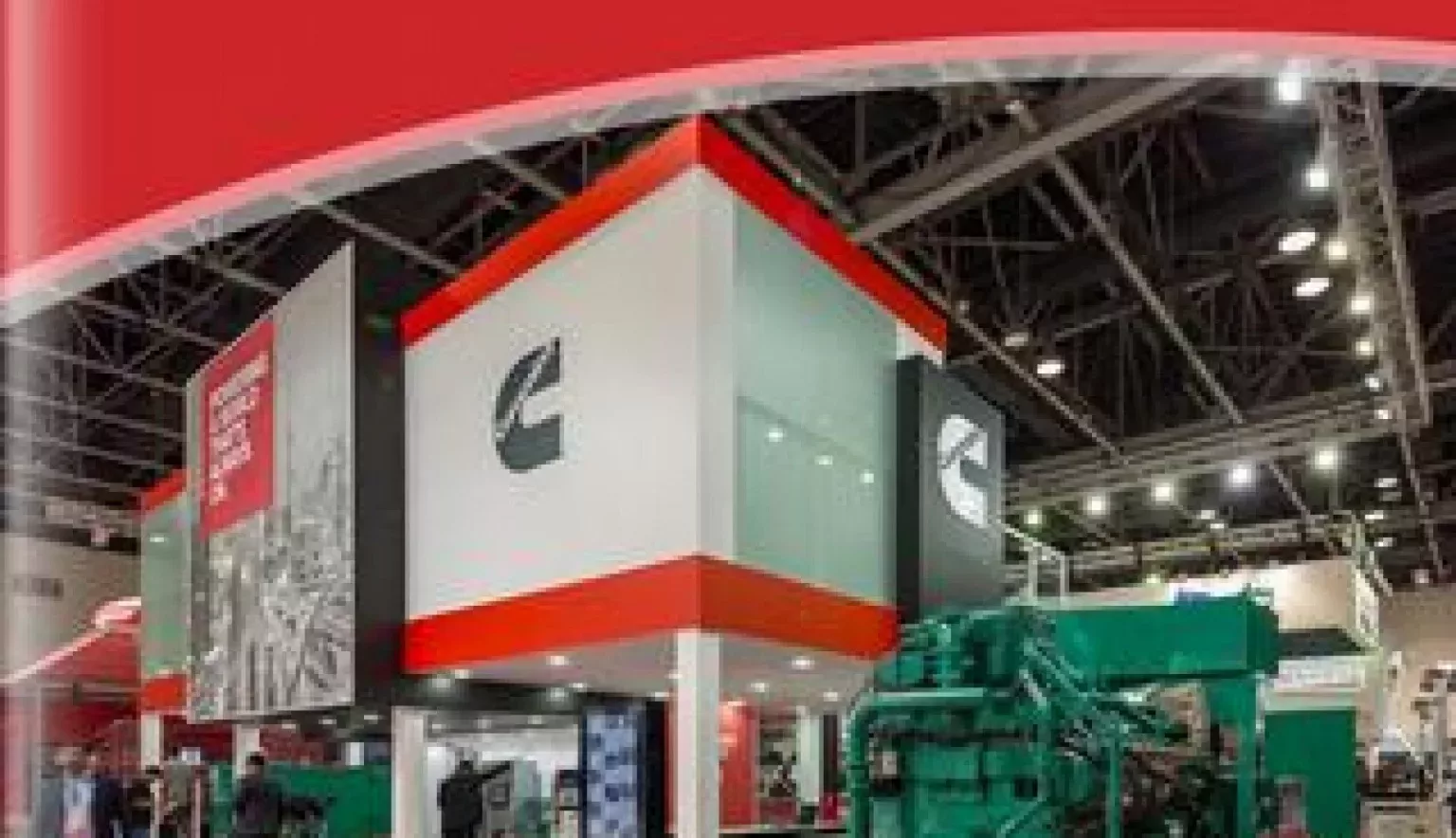Cummins Central Supply Chain Operations is leveraging almost 100 years of global experience, and more than 70 years of continental ingratiation to bring optimum supply chain solutions to Africa.
LEAN LOGISTICS
Cummins has instilled itself as a responsible, effective and successful industrial operator in Africa for more than 70 years and continues to leverage this almost unparalleled knowledge and experience. A crucial success factor that underpins this current and future success is the Company’s investment in and development of a world-class supply chain that is both flexible and resilient to the trade flow and operational risks of the region.
Incepting on the continent in 1946, the wider group has been a pioneer and innovator across realms of engines, generators, gas generation, industrial services and parts, and social enrichment; later becoming a wholly-owned distributor in South Africa in 2000 via Cummins Southern Africa. Going on to replicate this model through joint ventures in Nigeria and Ghana as well, the organic growth that the organisation has enjoyed has culminated in one of the most impressive turnkey portfolios in Africa. And through the introduction of Cummins Central Supply Chain Operations (CSCO), Cummins can truly claim to be a leading player at every stage of the industrial value chain.
“As part of a global and African strategy execution, we first decided to establish regional distribution centres (RDCs) in Africa, starting in Ghana (2014) and then South Africa (2015),” recalls Supply Chain Director, Gerald ‘Ged’ Mackell. “Overall, the Africa operations fall within the ‘Africa-Middle East’ region which comprises 11 wholly-owned distributors, two joint venture distributors, and four independent distributors; in addition to the two wholly-owned regional distribution centres.
“With the establishment of CSCO in Africa, we brought world-class order management, warehouse management and materials planning systems to the continent. This has increased the breadth and, selectively, the depth of inventory on the continent and has also brought global processes in order processing and warehouse management to Africa.”
As has been proved by all of Cummins’ previous expansions and diversifications throughout the decades, such solutions not only bring innovative new ideas to an ever-changing industrial landscape; but are also flexible enough in their own right to be applicable to the entire continent, rather than just an isolated national hub.
Mackell continues: “Through network studies we can determine the best locations to serve our distributors and end customers, always with the aim to reduce lead times, to improve availability, and to capitalise on economies of scale to reduce overall logistics costs.”
With this driving mission in place, Mackell goes on to pinpoint four key competitive advantages that will stand CSCO in good stead in the years to come: “Treating all our customers on an equal footing by using clearly communicated, standardised processes; demanding continuous process and cost improvements; offering a wider range of services; and greater levels of integration and collaboration with our third-party logistics partners.”
SIGNIFICANT GROWTH OPPORTUNITY
To fully understand the reason behind Cummins Africa’s success and continuously growing influence, you need only to look back at the history of the wider Cummins Group. Initially formed in 1919 as the Cummins Engine Company out of Indiana, USA, the business immediately established a reputation as a trailblazer, as one of the very first diesel engine manufacturers.
Following numerous diversifications and remit broadenings, the name was finally changed to Cummins Inc in 2001, safely entrenched in the global industrial fabric as a global power leader that designs, manufactures, distributes and services diesel and natural gas engines and related components.
Accounting for areas of filtration, aftertreatment, turbochargers, fuel systems, controls systems, air handling systems, transmissions and electric power generation systems, Cummins’ significance to OEMs was and is obvious; and it therefore became equally obvious to then account for the supply element between provider and user as well.
“We serve our customers through a network of approximately 500 wholly-owned and independent distributor locations and more than 7,500 dealer locations in more than 190 countries and territories,” the Company explains. “We have four complementary operating segments: Engine, Distribution, Components and Power Systems. These segments share technology, customers, strategic partners, brand recognition and our distribution network in order to compete more efficiently and effectively in their respective markets.
“Our products compete primarily on the basis of performance, fuel economy, speed of delivery, quality, customer support and price.”
Net sales for 2017 reached US$20 billion, with the distribution segment accounting for 27 percent of this figure; an indictment of this arm of the business and how pivotal it has become in complementing the Company’s traditional revenue drivers.
“Our global distribution segment consists of 28 wholly-owned and 10 joint venture distributors that service and distribute the full range of our products and services to end-users,” the Company continues. “Our wholly-owned distributors are located in key markets, including North America, Australia, Europe, China, Africa Russia, Japan, Brazil, Singapore and Central America, while our joint venture distributors are located across South America, the Middle East, India, Thailand and Singapore.
“The Africa Middle East region is primarily a distribution business formed from the recent 2017 merger of the Africa and Middle East regions and represents a significant growth opportunity for Cummins and is the focus of multi-year investments. Sales revenue here is expected to reach US$1bn in the next three years with planned CAGR of more than 10 percent.”
POWER AND RESOURCES
Since its inception, CSCO has strongly emphasised the need to improve the overall customer experience by improving service levels using world-class standardised processes as part of a more all-encompassing, lean continuous improvement strategy.
Ultimately enacted through a dedicated Global Logistics Improvement Group (GLIG) team, these lean methodologies display clear overlaps from Cummins’ successful engineering operations through an enhanced reliance on robust Six Sigma improvements (including the use of Voice of Customer and KJ studies), value stream mapping, value stream transformation, and strategic A3 improvements.
Tangibly, Mackell has seen this approach result in a number of successful rollouts, project successes and partnership establishments across Africa.
“Firstly, more customers are being served directly from local RDCs, bringing the power and resources of Cummins to the continent,” he says. “There has also been more regular shipments to customers to improve overall product availability and reduce the bull-whip effect; expanded localised kitting capabilities; an updated material planning system; improved inter-connections across systems to reduce errors and improve information flow; and for 2019, we will see an upgrade of our Red Prairie warehouse management system as part of its global rollout.”
Additionally, a network study is already being carried out to decide whether a third RDC will be introduced in the region, compounded by an already decided-upon Ghanaian transition which will see the Company move into a new state-of-the art leased facility.
Mackell adds: “Capital investment-wise, we will also see a relocation of our South African distributor to a new greenfield facility comprising a more modern warehouse; a relocation of our Nigerian distributor to an equally contemporary brownfields facility; the establishment of a new distributor in Morocco with a new warehouse; and – on the tech side – the design of each aforementioned, new warehouse via the utilisation of FlexSim warehouse design and optimisation software.”
“Cummins has a long history of corporate responsibility, based on the framework of linking the impact on our stakeholders to responsible business decisions. Our employees have invested talent, passion and resources into trying to solve problems in our communities and society since the Company’s inception in 1919.
“Our corporate responsibility activities in Africa are governed by a Corporate Responsibility Council consisting of eight members.”
SUPPLY CHAIN INTEGRATION
Capital expenditures aren’t solely enacted in an attempt to expand and become more advanced though; rather they are done so in line with the very latest industry and customer trends that Cummins is better equipped than most to identify given its copious experience across multiple industries.
Further examples in more recent times have also encouraged CSCO to move many of its applications to the cloud while minimising customisations in order to provide smoother upgrade paths.
Mackell adds: “We’ve also aligned supply chain systems to enable outcomes and processes that our customers require – i.e., improved responsiveness and a better information flow.
“We continue to strive for greater end-to-end supply chain integration. This is both internally across our business and with our suppliers.”
‘Integration’ is an apt term when analysing many facets that make Cummins the successful, multinational business it is today. From a human resource perspective, especially in Africa, the Company has made a concerted effort to embed itself as an intrinsically local entity; an ideology which can only be achieved through the hiring of local artisans, before providing them with the requisite training to ultimately build a sustainable talent pool on the continent.
To this end, each Regional Distribution Centre in Ghana and South Africa is staffed by individuals emanating from each respective country, even despite the end services being much more global in their nature.
“Training and retention is key, especially in markets where these skills are not readily available,” Mackell emphasises. “The use of our e-learning based supply chain academy therefore helps to develop technical skills, while we concentrate on social enrichment through a focus on aspects like gender diversity to increase the number of women with careers in supply chain.
“Consequently, this ethos helps us to better collaborate with our customers and partners on a more personable level; to then expand both their and our business profitability through providing supply chain value-added services at competitive costs.”

































